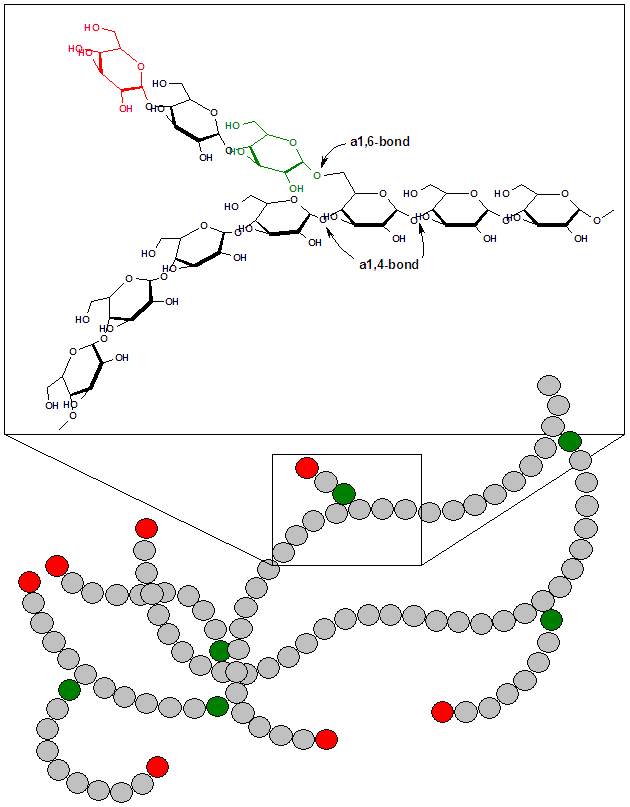When you are working out, your body is fueled by two forms of stored energy, fat stored in adipose tissue and glycogen, a polymer of glucose, stored in muscles and in the liver. Fat is a long-lasting and an almost limitless energy source. For example, a person weighing 100 pounds with 10% body fat has 10 pounds of stored fat, which can theoretically produce more than 30,000 calories (Cal), which is equivalent to 15-20 days amount of daily requirement. Of course, our metabolism is not so simple. Generally speaking, exercise below 50-65% of one’s maximum heart rate is in the fat burning (aerobic) zone and exercise at higher intensity is the anaerobic zone in which fat is not used much. Fasted training is designed to change this ratio; enhancing fat-burning capabilities and saving stored glycogen in endurance sports. As you get fitter, your body can become more energy efficient and burn fat even at a higher intensity level of exercise.
Glycogen

Glycogen is a fast-burning and limited form of energy. The amount of glycogen stored in the liver ranges 60-120g (240 – 480 Cal), depending on the time of day and the carbohydrate content of your last meal. When your liver glycogen is low and exercise intensity is high, you are in the risk of hypoglycemia. Muscles hold much lower concentration of glycogen (1-2% of lean muscle) but the total amount exceeds that in the liver. For example, 1,200-2,000 Cal equivalent of glycogen can be stored in total muscle of 140 lb man with 10% body fat. However, particular muscles can only access the glycogen inside of it. This means that your quads cannot tap into the glycogen inside of your biceps. During riding or running, even trained athletes can use only 30-35% of their total muscles so the actual available energy from glycogen for exercise is about 400-700 Cal.
Concept of fasted training

Scientific studies show that exercising in the fasted state stimulates training-induced adaptations in muscle cells to use fat oxidation (1-3) by increasing the number of mitochondria (to produce more energy) and blood vessels (to deliver more oxygen) (4). Fasted training aims to train the body to utilize fat more in the absence of blood glucose, helping stored glycogen last longer, increasing glycogen storage and stimulating the syntheses of mitochondria and blood vessels in working muscles.
Training strategies (adopted from Dr. Asker Jeukendrup’s blog)

- Before breakfast is the best time since your body is in a caloric deficit.
- Ride no longer than 60 to 90 min at a low or moderate effort to maximizing the effects and avoid dipping into stored glycogen.
- Eat carbohydrate rich mixed food (e.g. a bagel with peanut butter) within 30-60min of finishing the ride.
- Rehydrate within 60 to 90 minutes to further speed up recovery.
- Do these workouts just once or twice a week when you are mostly riding long and easy.
References
- Van Proeyen et al (2010). Training in the fasted state improves glucose tolerance during fat-rich diet. J Physiol. 588, 4289-302.
- De Bock K et al (2008). Effect of training in the fasted state on metabolic responses during exercise with carbohydrate intake. J Appl Physiol 104, 1045–1055.
- Stannard SR et al (2010). Adaptations to skeletal muscle with endurance exercise training in the acutely fed versus overnight-fasted state. J Sci Med Sport 13, 465–469.
- Baar K (2013). New ideas about nutrition and the adaptation to endurance training. Sports Sci Exchange 26, 1-5.
